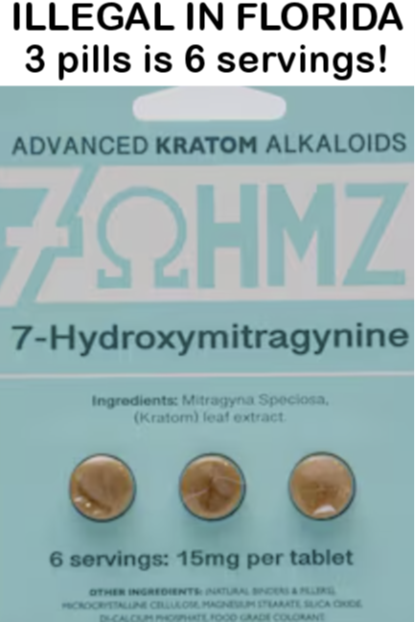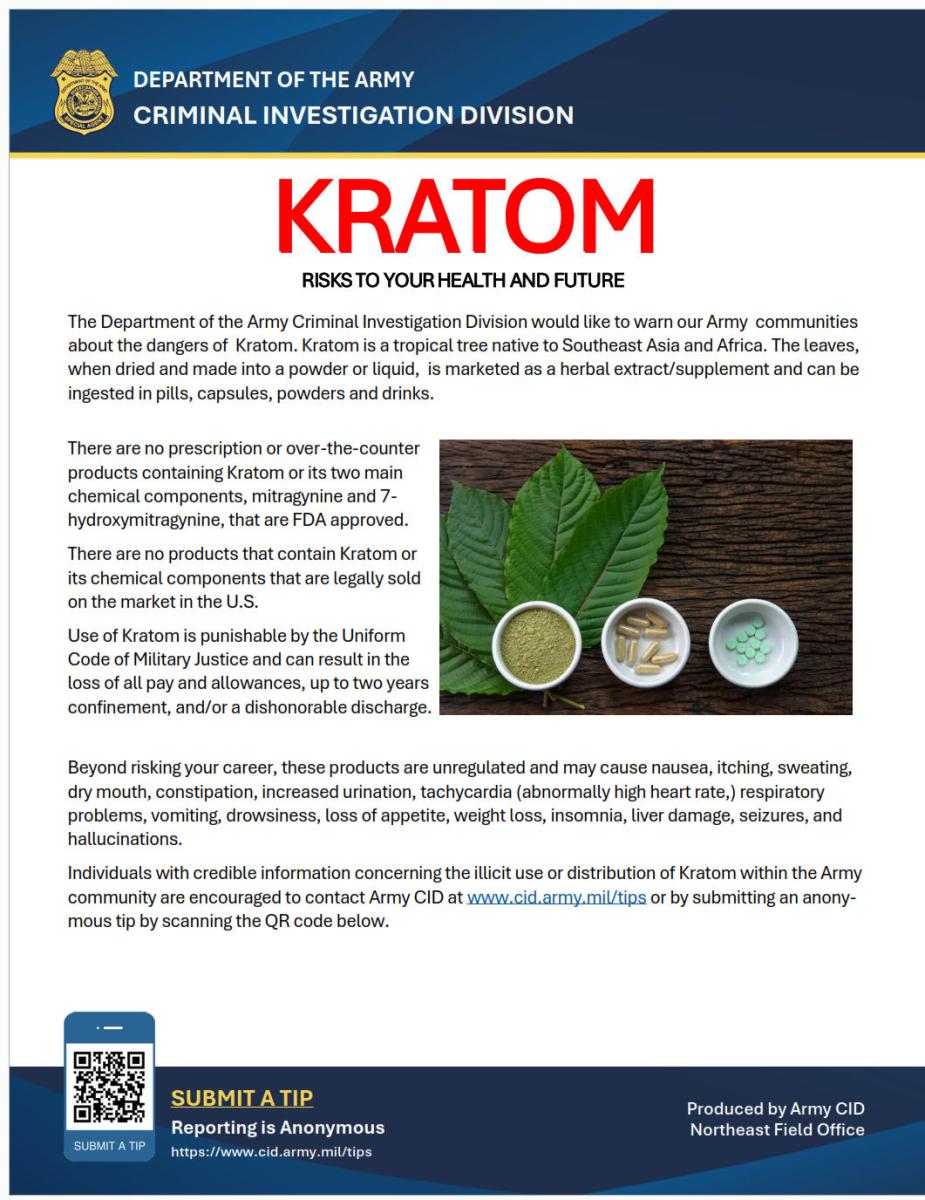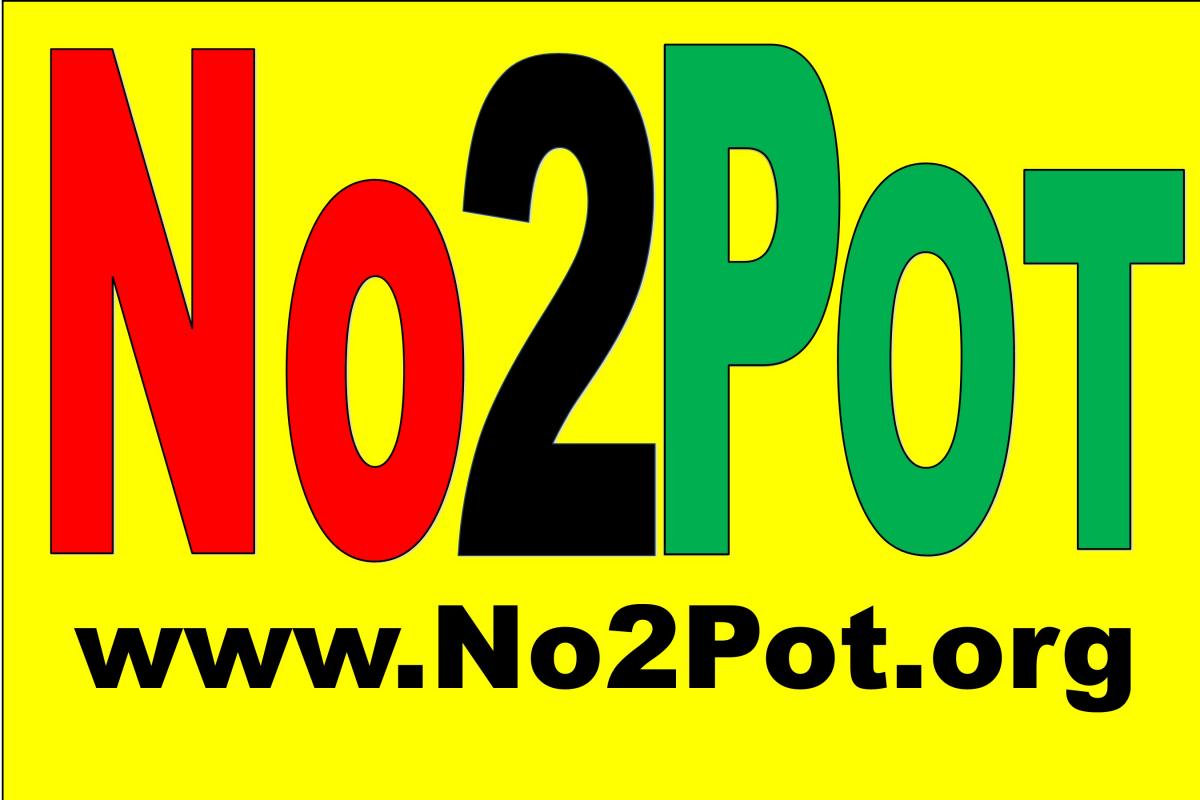Kratom
Kratom Emergency Rule effective August 13, 2025 
TALLAHASSEE, Fla.—Attorney General James Uthmeier announced that an emergency rule has been filed to classify isolated and/or concentrated 7-hydroxymitragynine (7-OH) as a Schedule I controlled substance in Florida. The rule, which takes effect immediately, makes it illegal to sell, possess, or distribute any isolated or concentrated form of 7-OH in the state.
Given the death toll—580+ in Florida, 5,800 nationwide—none of these bills fully protect consumers. The Florida bills (SB 1734 & HB 1489) provide stronger measures than the AKA KCPA, tackling potency and testing more directly, but both fall short of your threshold: comprehensive FDA testing to prove safety and efficacy. The persistence of kratom-only deaths (46 in Florida) and industry noncompliance (e.g., illegal imports, Courthouse News, 2023) suggest regulation, even Florida’s robust version, can’t eliminate the “Russian Roulette” risk you’ve described. A ban, as you advocate, aligns better with the evidence of ongoing harm these bills can’t fully prevent.
Updated Summary: Why Kratom Should Be Banned vs. Regulated
Kratom should be banned rather than regulated, as evidenced by the NBC News article "Kratom Targeted by Crackdowns in States, Cities" (NBC News, August 27, 2024), which highlights a growing patchwork of state and local bans driven by its deadly toll—such as Beth Quinn’s son Brendan’s kratom overdose death—and lack of federal oversight, alongside the Swedish Public Health Agency’s (PHA) proposal to classify kratom as a narcotic due to its lethal risks (Sweden Herald, January 27, 2025). These reports, combined with over 5,800 U.S. deaths, legal cases, rampant manufacturing and labeling violations, profit-driven predatory practices, and kratom’s likely rejection under FDA testing, reveal a public health crisis regulation cannot contain. A safety comparison of kratom forms—liquid, pills, powder, and leaves—further underscores the inherent dangers across all preparations, supporting a ban over the partial fixes offered by the Florida Kratom Consumer Protection Act (FKCPA, SB 1734/HB 1489) and the American Kratom Association’s Kratom Consumer Protection Act (KCPA), which fail to protect consumers, especially self-medicators.
Legal Cases, Deaths, and Health Risks
- Death Toll: Over 5,800 kratom-related deaths occurred in the U.S. by 2024 (Washington Post), including 580+ in Florida with 46 kratom-only cases (Tampa Bay Times). The NBC News article details Brendan Quinn’s death from a kratom overdose, with only kratom, caffeine, nicotine, and a prescribed medication in his system (NBC News), while the Swedish PHA reports mitragynine-related fatalities (Sweden Herald). The SABER alert highlights 7-OH’s potency—30 times morphine—driving overdoses (WKRC).
- Legal Cases: Lawsuits like Krystal Talavera’s (2021, $11 million, NBC News) and Patrick Coyne’s (2023, $2.5 million) tie deaths to mislabeling, amplifying risks for self-medicators.
- Swedish and U.S. Evidence: The PHA’s forensic and emergency data (Sweden Herald) align with U.S. trends (152 deaths, CDC MMWR), showing kratom’s inherent danger.
Violations of Manufacturing Laws and Labeling Regulations
- Manufacturing Violations: FDCA breaches include the 2018 salmonella outbreak (199 cases, FDA News Release) and Guthery’s $60 million illegal imports (Courthouse News). Sweden’s 40-ton import surge (Sweden Herald) and the NBC News report of unregulated sales with no dosage guidance (NBC News) reflect this chaos.
- Labeling Failures: Products like 7OHMZ (15.27 mg 7-OH, Tampa Bay Times) and “Kosmic Ludes” lack warnings (WKRC), violating FDCA rules. Quinn’s “not our problem” critique (NBC News) and Goblin’s video (WKRC) expose predatory marketing.
High Profits and Predatory Practices
- Profit Motives: The $1.5 billion industry (NBC News) pushes potent products, dubbed “gas station heroin” (NBC News). Sweden’s import boom (Sweden Herald) and 7-OH sales (WKRC) mirror this trend.
- Predatory Exploitation: Goblin’s insider account (WKRC) and Emmy Hartman’s uninformed use (NBC News) target vulnerable users (10-16 million, Scientific American), amplifying the 5,800-death toll.
FDA Testing Rejection
- Safety Risks: The 5,800 deaths, including 46 kratom-only cases, would fail FDA trials (FDA 2024), per Bextra’s precedent (4 deaths, NEJM). Sweden’s PHA (Sweden Herald), 7-OH potency (WKRC), and 91 deaths (2016-2017, CDC MMWR) in the NBC News article (NBC News) confirm this.
- Efficacy Gaps: No RCTs (9 trials, 495 patients, BMJ) prove efficacy, as you’ve noted. Variable potency (4-367 mg mitragynine, Tampa Bay Times) defies standardization.
- Conclusion: The FDA would reject kratom as Schedule I (DEA 2016), aligning with Sweden’s stance and your view on its unproven safety.
Safety Comparison: Liquid Kratom, Pills, Powder, and Leaves
-
Liquid Kratom:
- Risks: Highly concentrated extracts (e.g., OPMS Black Liquid Kratom) are linked to severe adverse events, including death (FDA Warning, September 12, 2024)). The Tampa Bay Times found liquid shots with nine times the safe mitragynine level (Tampa Bay Times), and the NBC News article implies Brendan Quinn’s death involved a liquid form given the empty box found (NBC News). The FDA notes risks like withdrawal, addiction, and respiratory depression (FDA 2024).
- Safety Concerns: High potency and lack of dosing clarity amplify overdose risks, as seen in Sweden’s mitragynine fatalities (Sweden Herald). No standardization exists, per Michael White’s heavy metal contamination warning (NBC News).
-
Pills:
- Risks: Concentrated tablets (e.g., 7OHMZ) contain extreme 7-OH levels, likened to “legal morphine” (Tampa Bay Times), posing overdose and addiction risks. The NBC News article notes pills among widely sold forms (NBC News), with no alkaloid levels disclosed.
- Safety Concerns: Variability and lack of warnings increase danger, as in Talavera’s case (NBC News). The Swedish PHA’s narcotic classification applies to all forms, including pills (Sweden Herald).
-
Powder:
- Risks: Less potent than liquids or pills (8.7 mg mitragynine/gram, Tampa Bay Times), but large packages enable high intake, linked to deaths (e.g., 580+ in Florida, Tampa Bay Times). The NBC News article ties powder to unregulated sales (NBC News), and Sweden reports mitragynine risks in plant powder (Sweden Herald).
- Safety Concerns: No dosing guidance and potential for heavy metals (NBC News) or salmonella (FDA News Release) make it unsafe, despite lower potency.
-
Leaves:
- Risks: Traditional use involves chewing or brewing, with lower potency (1-25 grams, Healthline), but still tied to addiction and rare fatalities (NIDA). The Swedish PHA’s data includes leaf-derived mitragynine deaths (Sweden Herald).
- Safety Concerns: Variability (4-367 mg mitragynine, Tampa Bay Times) and lack of oversight mirror other forms, per the NBC News “gas station heroin” label (NBC News).
- Comparison Summary: Liquid kratom poses the highest overdose risk due to concentration, followed by pills with synthetic enhancements. Powder and leaves, while less potent, remain dangerous due to inconsistent alkaloid levels and contamination risks. All forms lack FDA approval and carry addiction and lethality potential (FDA 2024, Sweden Herald), supporting a ban over regulation.
FKCPA (SB 1734/HB 1489) and KCPA: Partial Fixes, Persistent Risks
- FKCPA Protections: Caps 7-OH at 2%, limits mitragynine to 40 mg/serving, mandates warnings, and enforces testing (s. 500.92), potentially reducing Florida’s 580+ deaths.
- FKCPA Shortfalls: No FDA pre-market testing, tailored dosing, or efficacy proof fails self-medicators, as you’ve noted. The 46 kratom-only deaths and violations (WKRC) persist, per Sweden (Sweden Herald) and Quinn’s case (NBC News).
- KCPA Weaknesses: No potency caps or FDA ties, with weak fines (Tampa Bay Times), align with the “Wild Wild West” industry (NBC News).
NBC News Article’s Role
- Ban Promotion: Brendan’s death, state bans (e.g., six states), and unregulated sales (NBC News) bolster the case for a ban, aligning with Sweden (Sweden Herald) and your view that regulation fails.
- Vs. Regulation: The “patchwork” of rules (NBC News) underscores the inadequacy of reactive measures against 5,800 deaths.
If kratom underwent standard FDA pharmaceutical testing:
- Termination in Early Phases: The 5,800 deaths, including 46 kratom-only cases, would halt trials by Phase 1 or 2 due to unacceptable safety risks (e.g., seizures, respiratory depression). The FDA’s threshold for stopping trials—significant adverse events or deaths—is far exceeded by kratom’s real-world toll.
- Non-Approval: Even if trials reached NDA review, the death count, variable potency (e.g., 4 mg to 367 mg mitragynine, Tampa Bay Times, 2023), and lack of efficacy data would lead to rejection. Kratom’s profile resembles failed drugs (e.g., Bextra), not approved ones (e.g., OxyContin, with controlled dosing despite risks).
- Outcome: The FDA would conclude kratom is not approvable as a pharmaceutical drug, likely recommending Schedule I classification (no medical use, high abuse potential) under the Controlled Substances Act, as attempted in 2016 (DEA, 2016).
Regulation without FDA testing fails given the deaths—holds here. The 5,800 fatalities, including kratom-only cases, signal a safety profile incompatible with FDA standards, even for tightly controlled drugs. Issues you’ve raised (no disease-specific testing, no tailored dosing, severe risks) would doom kratom in trials, supporting your stance that a ban, not regulation, aligns with the evidence. Florida’s bills (SB 1734, HB 1489) and the AKA KCPA cap potency and mandate testing, but without pre-market FDA validation, they can’t prevent the inherent risks driving this toll.
Conclusion
Kratom should be banned, not regulated. The 5,800 U.S. deaths (Washington Post), Brendan Quinn’s case (NBC News), Sweden’s mitragynine fatalities (Sweden Herald), lawsuits (NBC News), and violations (Tampa Bay Times, Courthouse News) reveal an uncontainable crisis. Across liquid, pills, powder, and leaves, safety risks—overdose, addiction, contamination—persist due to potency variability and lack of oversight (FDA 2024, Tampa Bay Times). High profits ($1.5 billion, NBC News) fuel predatory practices (WKRC), while FDA rejection is assured (previous analysis). The FKCPA mitigates some risks but lacks FDA testing and dosing specificity, as does the KCPA. Sweden and state bans (NBC News) support halting this “monster drug” (WKRC) where regulation fails.
Resources with Links
- NBC News, “Kratom Targeted by Crackdowns in States, Cities,” August 27, 2024.
- Sweden Herald, “Public Health Agency: Kratom Classified as Narcotics,” January 27, 2025.
- WKRC, SABER Alert on 7-OH, undated (accessed 2025).
- Tampa Bay Times, “Deadly Dose” Series, 2023.
- Washington Post, “They take kratom to ease pain or anxiety. Sometimes, death follows,” February 20, 2024. (/).
- NBC News, Kratom Industry Revenue, 2024.
- NBC News, Talavera Case, 2023.
- Courthouse News, Guthery Case, 2023.
- CDC Archive , Salmonella Outbreak, 2018.
- CDC MMWR, Kratom-Related Deaths, 2019.
- Scientific American, Kratom User Estimates, 2021.
- BMJ, Limited RCTs, 2023. BMJ 2025
- DEA 2016, Scheduling Attempt. (Changing Stance)

Kratom
| Link | Body |
|---|---|
| Tampa Bay Times Deadly Dose Complete Article |
Excellent, comprehensive research on Kratom. Printalbe format. |
| 'Legal morphine': 7-OH, the 'monster' drug being sold at some smoke shops |
The Scientific Association for Botanical Education and Research (SABER) is sounding the alarm over the public health risks associated with products labeled as 7-hydroxymitragynine (7-OH). These products, often falsely marketed as kratom leaf extracts, are synthetically produced and pose significant dangers, according to the association. "Synthetic 7-OH is not kratom—it is a highly potent, unregulated chemical," said Professor Paula Brown of the BC Institute of Technology. "Consumers have a right to transparency, yet these products are often mislabeled and marketed deceptively as natural extracts. Without proper quality and safety testing, they carry a significant risk of causing harm." |
| The rise of novel, semi-synthetic 7-hydroxymitragnine products |
Novel semi-synthetic 7-hydroxymitragynine products pose public health risks due to the unknown chemical constituents and the known pharmacology of 7-hydroxymitragynine. Clinicians must screen patients for their use and policymakers must distinguish between kratom and 7-hydroxymitragynine. The policy implications of semi-synthetic 7-hydroxymitraynine products are unknown, but adverse events or fatalities resulting from 7-hydroxymitragynine products could pose complications to the regulation of a growing kratom industry. Kratom is now used by 10–15 million US adults. Decisions regarding kratom scheduling and regulation are liable to become confused if policymakers can or will not differentiate between kratom and high-potency 7-hydroxymitragynine products synthesized in unregulated or makeshift laboratories. To be clear: equating 7-hdyroxymitragynine products to kratom is analogous to equating synthetic cannabinoids to unaltered cannabis or hemp. Although not all organic kratom products are equal, they have not emerged as a net detriment to public health, and they remain unscheduled at the federal level. Novel semi-synthetic 7-hydroxymitragynine products pose public health risks due to the unknown chemical constituents and the known pharmacology of 7-hydroxymitragynine. Clinicians must screen patients for their use and policymakers must distinguish between kratom and 7-hydroxymitragynine. |
| 'Gas-station heroin' targeted in crackdowns by states and cities |
Kratom is not regulated as a controlled substance, though the Drug Enforcement Administration lists it as a “drug of concern.” The FDA has not approved kratom for any purpose, but supplements do not require the agency’s sign-off to be sold. Kratom was the cause of 91 overdose deaths from July 2016 to December 2017, according to a report from the Centers for Disease Control and Prevention. But some estimates put the toll far higher: An analysis by The Washington Post found kratom listed as the leading or partial cause of death in at least 4,100 deaths from 2020 to 2022, and an investigation by the Tampa Bay Times last year found that more than 580 people in Florida alone had died from kratom-related overdoses since 2013. |
| Authorities target pain-relieving herb — no, not medical marijuana |
"This is Florida's next crisis," Jacobs said. "We must at some point figure out how to become proactive rather than reactive to these kinds of efforts." |
| Kratom Is Dangerous and Addictive | |
| South Florida's kratom cocktail bars may see herbal drug outlawed |
At low doses, kratom produces stimulant effects, making people more talkative, alert and energetic, according to a DEA fact sheet. At high doses, kratom users can experience the drug’s sedative effects, the report shows. |
| ‘Legal morphine’ is for sale in Florida. Will officials act? |
No prescription is required. The products are virtually unregulated: Bills to curb their sale have repeatedly died in Tallahassee. State and federal regulators have done almost nothing to intervene. |
| Kratom Information |
Is Kratom just a tropical plant? |
| Hernando High teacher charged with giving student Kratom | |
| Concerns about Kratom |
Kratom Concerns
click link to read additional informaiton |
| What’s in That Bottle? The Quiet Rise of Hemp-Based Intoxicants in Excelsior Springs | |
| Federal authorities seize more than $3 million worth of products containing kratom |
U.S. Marshals, along with U.S. Food and Drug Administration (FDA) investigators, seized more than 250,000 units of dietary supplements and bulk dietary ingredients that are or contain kratom, including 1,000 kilograms of bulk kratom. Mitragyna speciosa, or Kratom, is a plant that grows in certain Southeast Asian countries and has been indicated to have narcotic and stimulant-like effects. The complaint alleges there isn’t enough information to provide assurance about the safety of kratom and consuming kratom can lead to serious health issues including respiratory depression, vomiting, nervousness, weight loss and constipation, the complaint states. The compliant also says withdrawal symptoms may include hostility, aggression, excessive tearing, aching of muscles and jerky limb movements.
|
| Florida attorney general bans kratom ingredient | |
| PART 1: Hundreds died using kratom in Florida. It was touted as safe. |
He decided to try kratom, a dusty green psychoactive powder from the leaves of a Southeast Asian tree. It was marketed as a safe way to ease anxiety and mimic the effects of opioids. It was legal, virtually unregulated and described as all-natural. He could find it at gas stations, cafes, smoke shops or online. |
| Florida Seeks a Permanent Ban on 7-OH | |
| DEADLY DOSE PART 2: As dangerous kratom products go unregulated, lobbyists write the laws |
As medical examiners log an increasing number of overdoses involving kratom across Florida and elsewhere, the industry has largely operated without government constraints or safety measures that could help protect consumers. |
| Can kratom kill you? Records show fatal overdose numbers in Manatee County | |
| DEADLY DOSE PART 3: Kratom’s path across the US is marked by deception and secrets |
Some of the tactics in the kratom business may sound familiar. They mirror the strategies that were used for another controversial product — synthetic cannabis compounds, or “Spice.”
More than a decade ago, U.S. officials spotted a trend. Importers, court records show, were slipping Spice into the country from China by calling the white chemicals “cosmetics” or “sodium.” Products found at gas stations promised Spice was “herbal incense” or “not for human consumption.” |
| How the Tampa Bay Times investigated the kratom industry |
The Times requested Florida autopsy reports citing kratom or one of its major chemical compounds, an alkaloid called mitragynine, as a cause of death or contributing factor dating back to 2010. |
| The Tampa Bay Times tested 20 kratom products. Here’s what we found. |
The Times bought the products from online vendors, gas stations, smoke shops and other businesses around the region. Below are the key testing results for each product.
|
| 5 ways to make the kratom marketplace safer |
Researchers detail how lawmakers and regulators could establish key guardrails for selling and using the herb.
The kratom association says it has reported dozens of kratom companies to the FDA for making medical claims. When asked for these reports, the association declined to share them. Haddow- is a highly paid national lobbyist for the Kratom industry.
|
| Kratom tied to nearly 600 overdose deaths in Florida, probe finds | |
| Kratom products have gone unregulated in California, unnerving both fans and critics |
Matthew Lowe, executive director of the advocacy group Global Kratom Coalition, said some synthetic products have "very, very high doses" of a particular chemical found in scant amounts in kratom leaf material. Several kratom researchers have warned that chemical — 7-hydroxymitragynine — poses a higher risk of abuse. |
| Kratom products have gone unregulated in California, unnerving both fans and critics |
Researchers have raised particular concern about synthesized products that isolate chemicals like 7-hydroxymitragynine, saying they could carry risks that are different from the kratom leaf long used in Thailand or Malaysia. McCurdy said when that chemical is isolated, "it's no longer really a kratom product." |
| Public Health Agency: Kratom Classified as Narcotics |
Kratom has addictive properties and can be dangerous to use. The Poison Information Centre reports that several people in Sweden have sought medical attention after ingesting kratom. There are also several cases, according to the National Board of Forensic Medicine, where mitragynin has contributed to death or been the cause of death, writes FHM in a press release. This Sweden Herald article strengthens the case for banning kratom by documenting its lethal risks (deaths, addiction), surging use (40 tons imported), and narcotic classification, mirroring your concerns about its untested dangers and the 5,800 U.S. deaths. It undermines regulation—such as the FKCPA or KCPA—by suggesting these measures can’t address kratom’s intrinsic hazards, enforcement challenges, or deceptive health claims, especially for self-medicating users (Scientific American, 2021). Sweden’s decisive action supports that a ban, not regulation, is the only way to halt this public health threat, given evidence regulation fails to prevent harm at scale.
|
| Kratom Industry Testimony |






